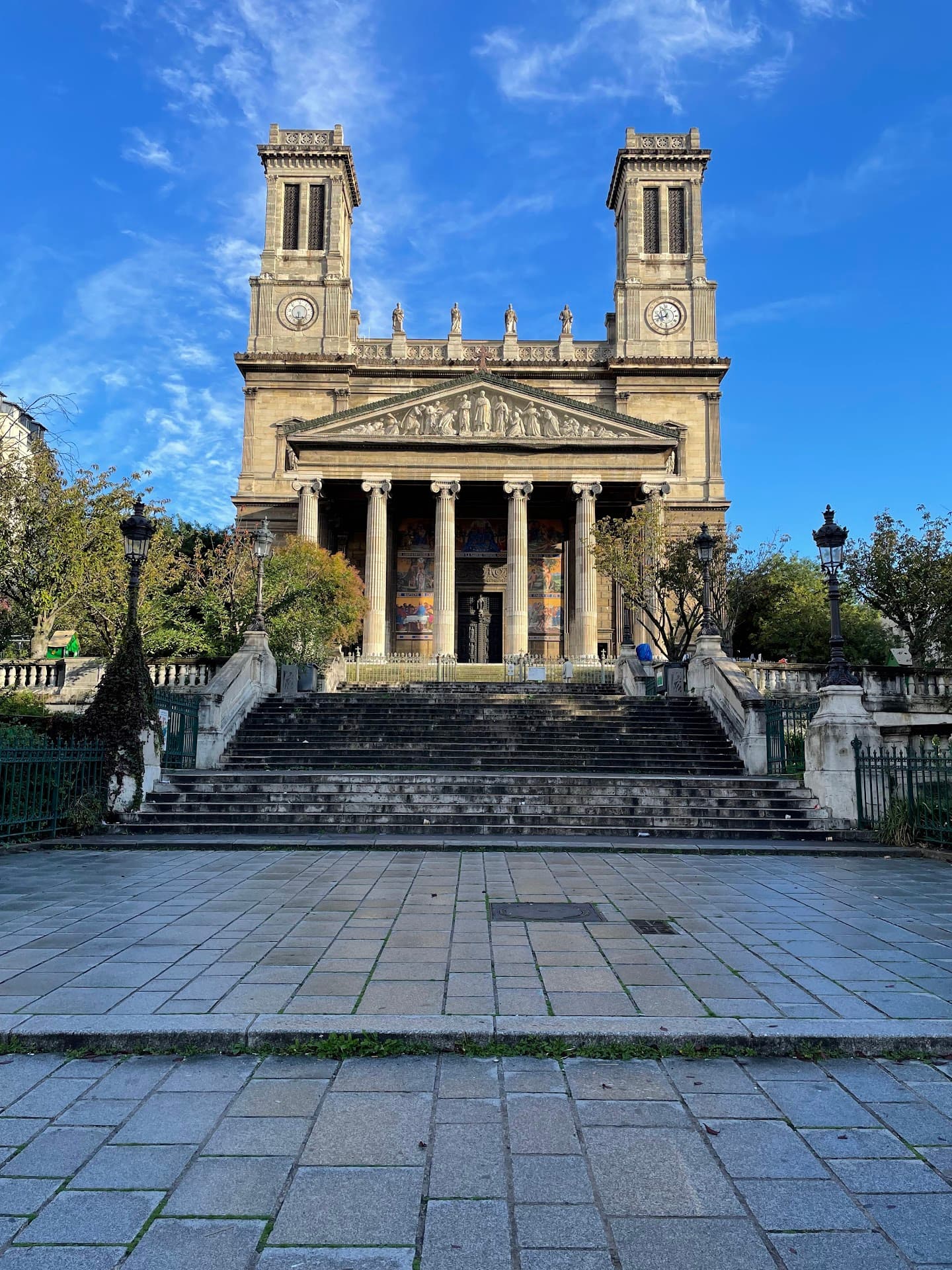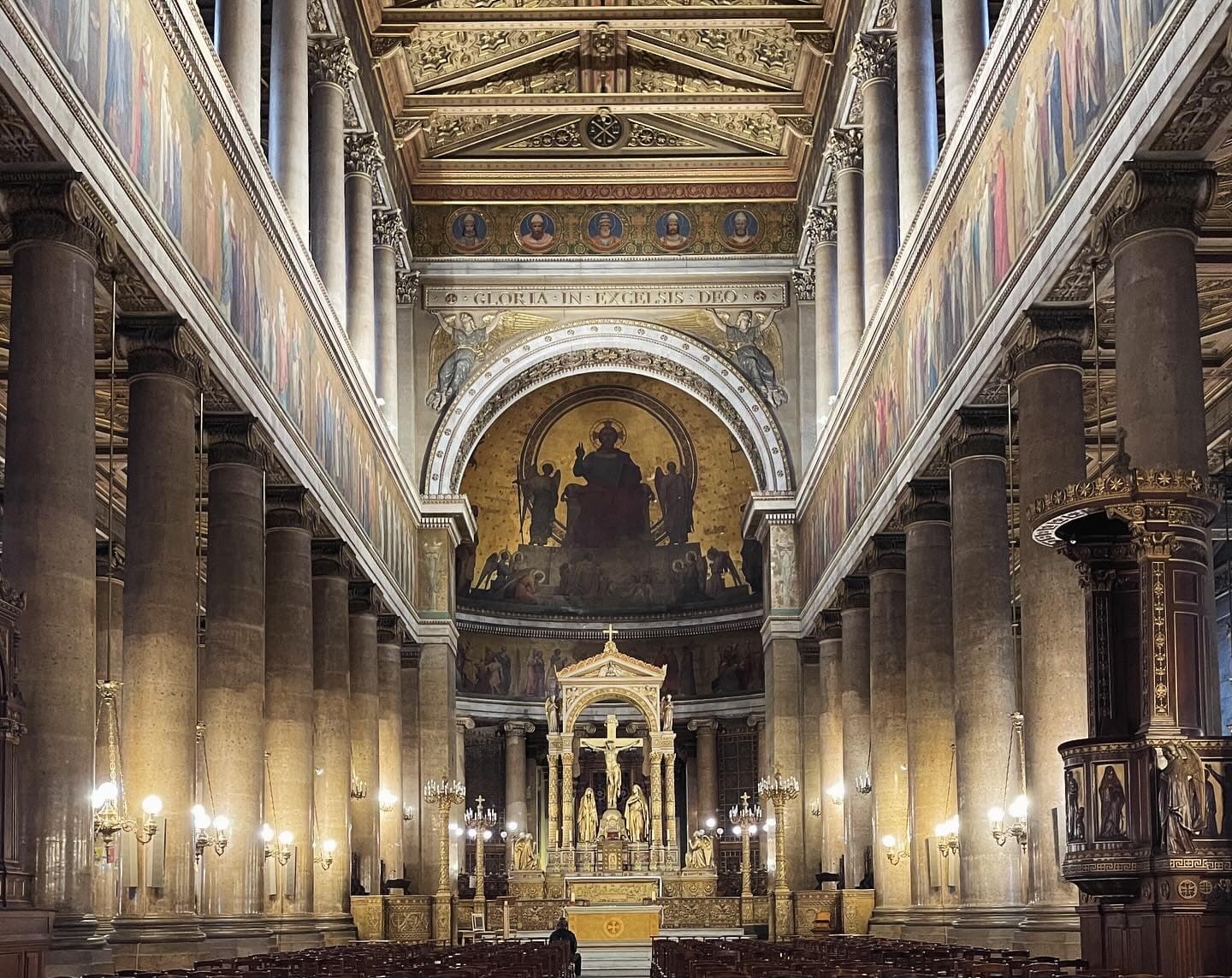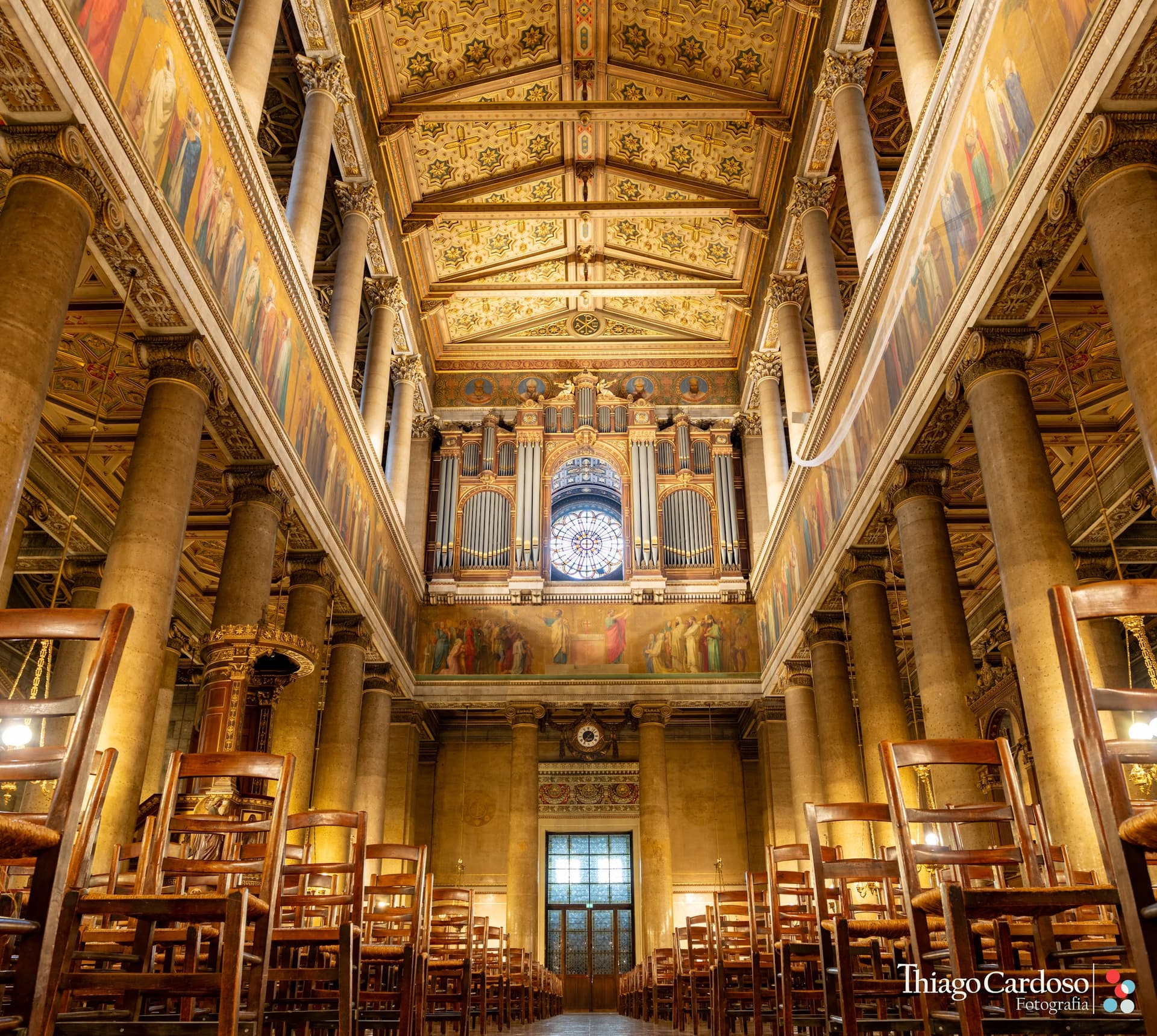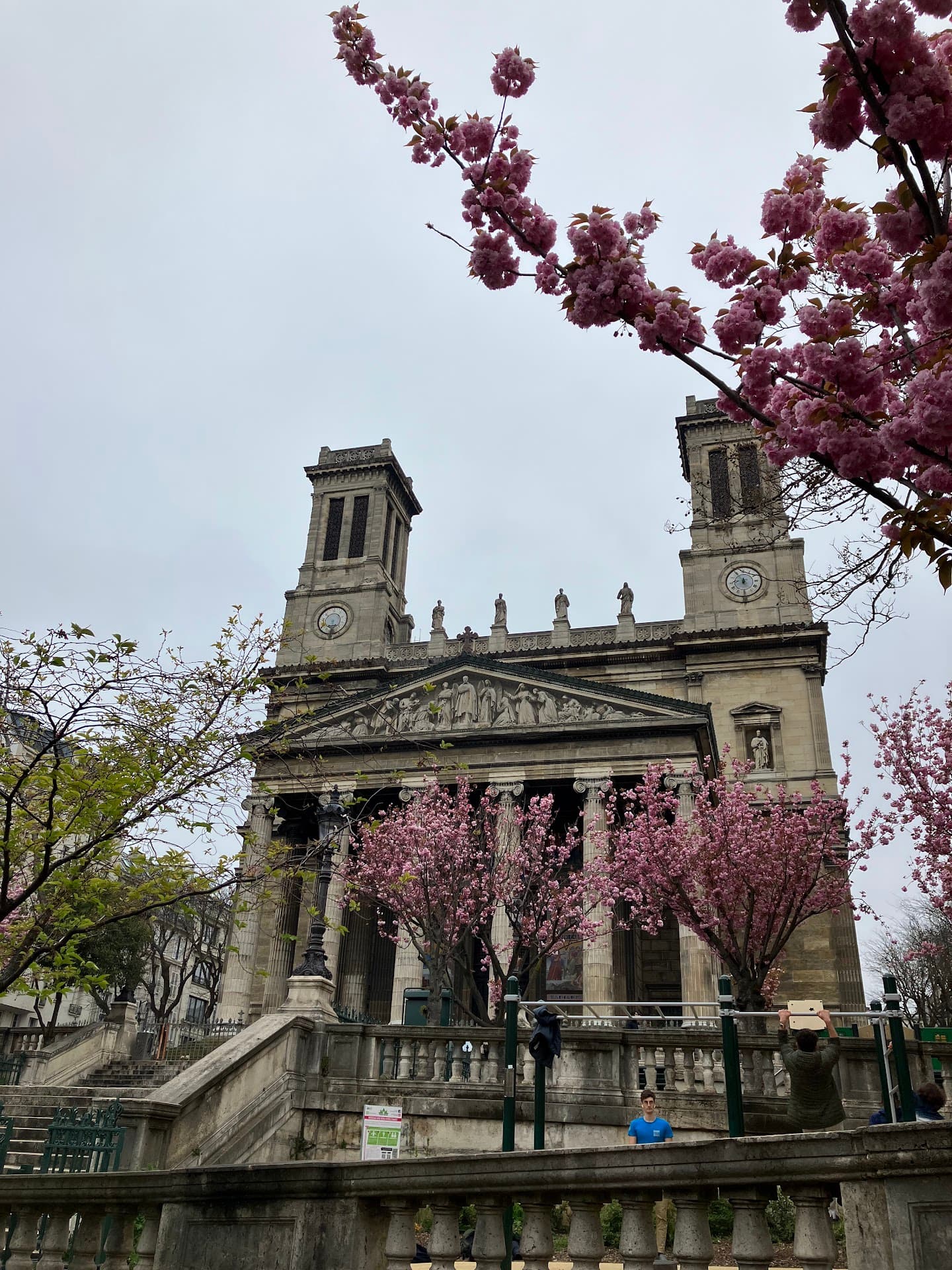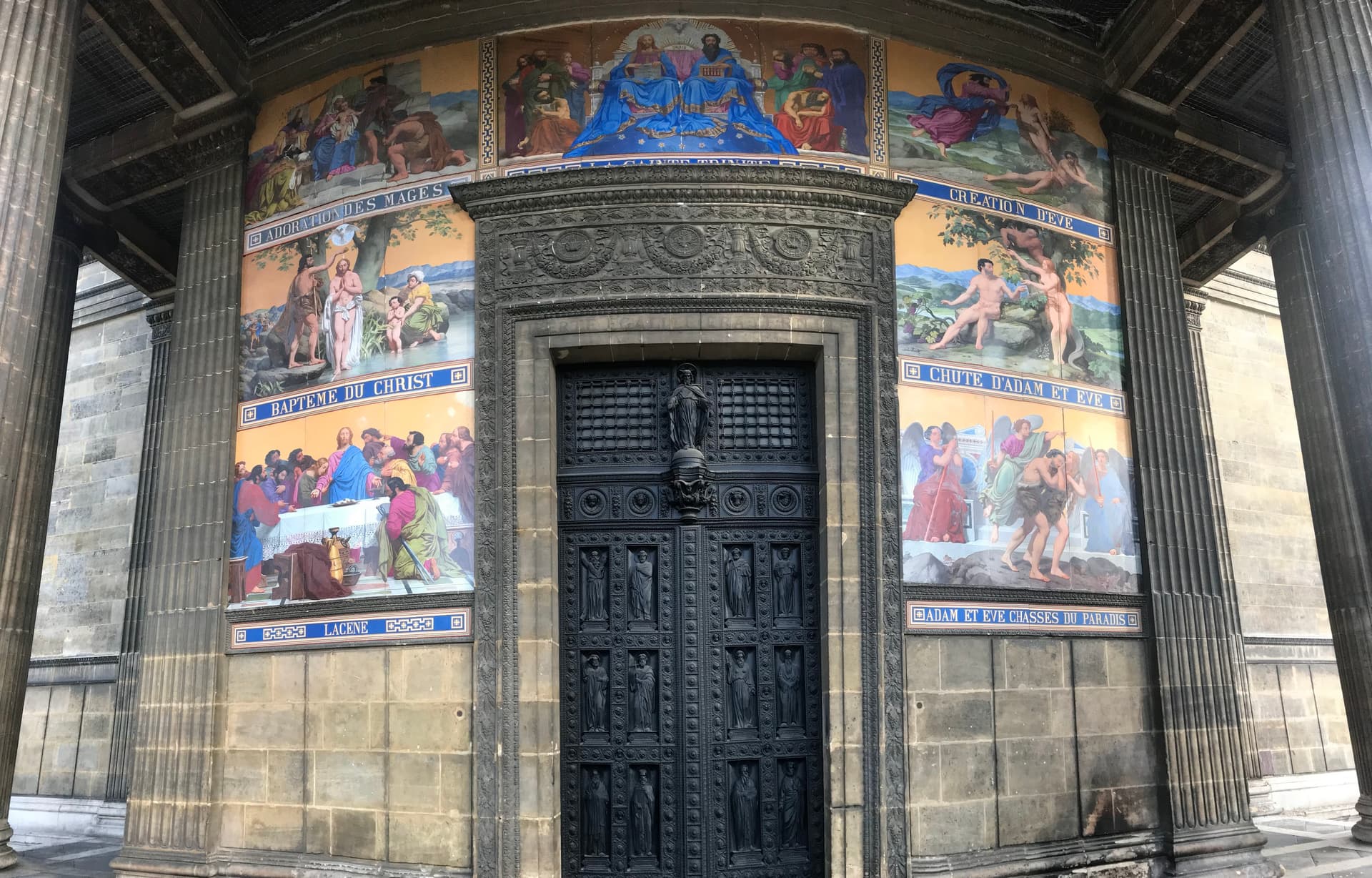Audio GuideSaint-Vincent de Paul Catholic Church
Église Saint-Vincent-de-Paul
Neoclassical church founded in 1824, known for a gilded frieze portraying 160 saints in the nave.
The Church of Saint-Vincent-de-Paul is a striking landmark in the heart of Paris with a rich and diverse past. Originally, this site hosted a leper colony during the twelfth century, later becoming a hospital and even a notorious prison known as Saint-Lazare. Famous figures such as the playwright Pierre Beaumarchais, the poet André Chénier, the Marquis de Sade, and Mata Hari once walked its halls.
Built between eighteen twenty-four and eighteen forty-four, the church is a superb example of neoclassical design. The façade impresses with twin bell towers, a long stairway, and a portico supported by twelve Ionic columns symbolizing the Twelve Apostles. High-relief sculptures on the pediment honor Saint Vincent de Paul, to whom the church is dedicated.
Inside, the grand basilica layout unfolds with a dual-level nave lined with classical columns. A richly decorated frieze in gilded tones depicts the mission of the church with figures of saints, bishops, and martyrs. Notable artworks such as the frescoes by Hippolyte Flandrin, the cupola painting by Édouard Picot, and a monumental bronze crucifixion by François Rude add to the splendor of this sacred space.
Music has always been vital here. The famous organs, including a great organ built by Aristide Cavaillé-Coll in the mid-nineteenth century, have echoed the contributions of celebrated organists like Louis Braille and Léon Boëllmann. Designed by Jean-Baptiste Lepère and his son-in-law Jacques Hittorff, whose work is also seen at the Gare du Nord, this church lies near the Eurostar terminal, underscoring its enduring cultural significance in Paris.
